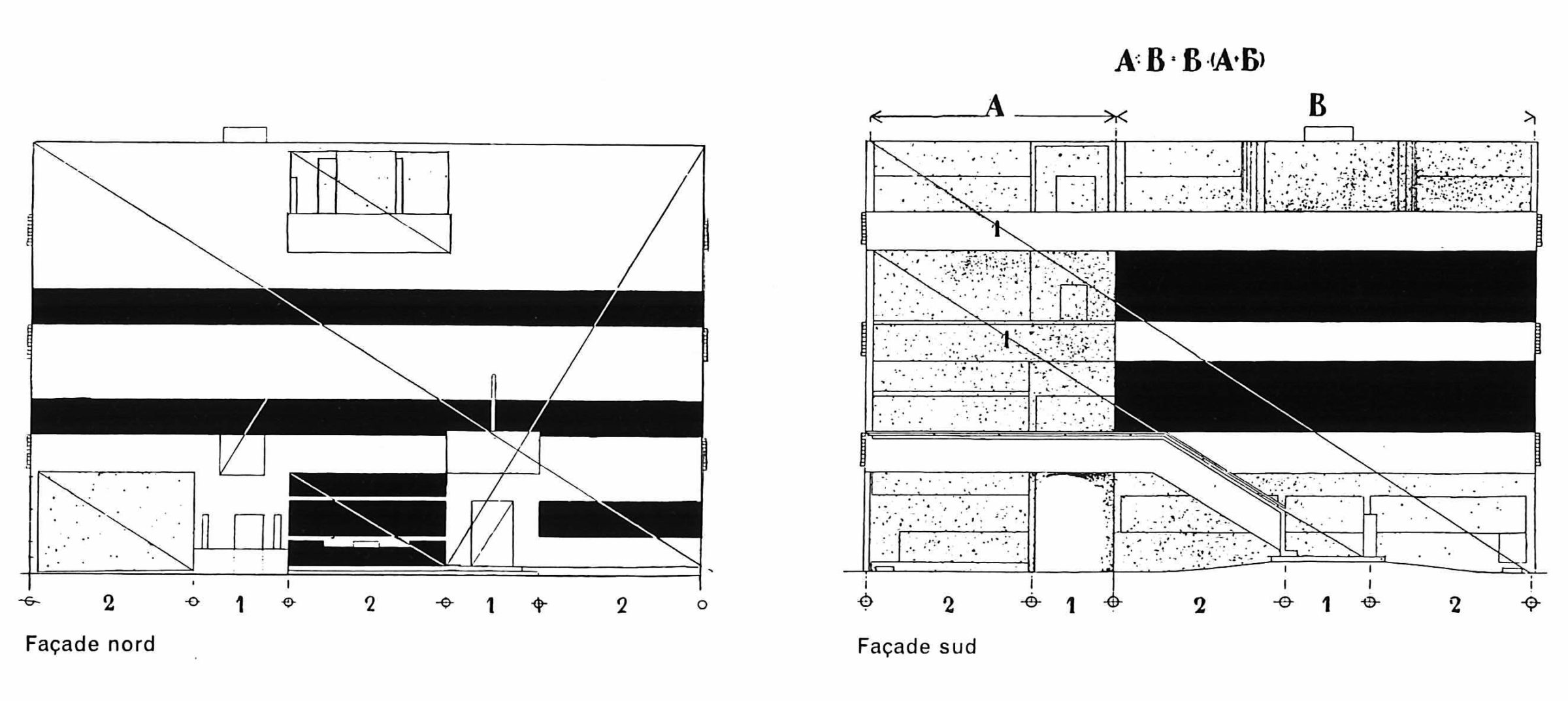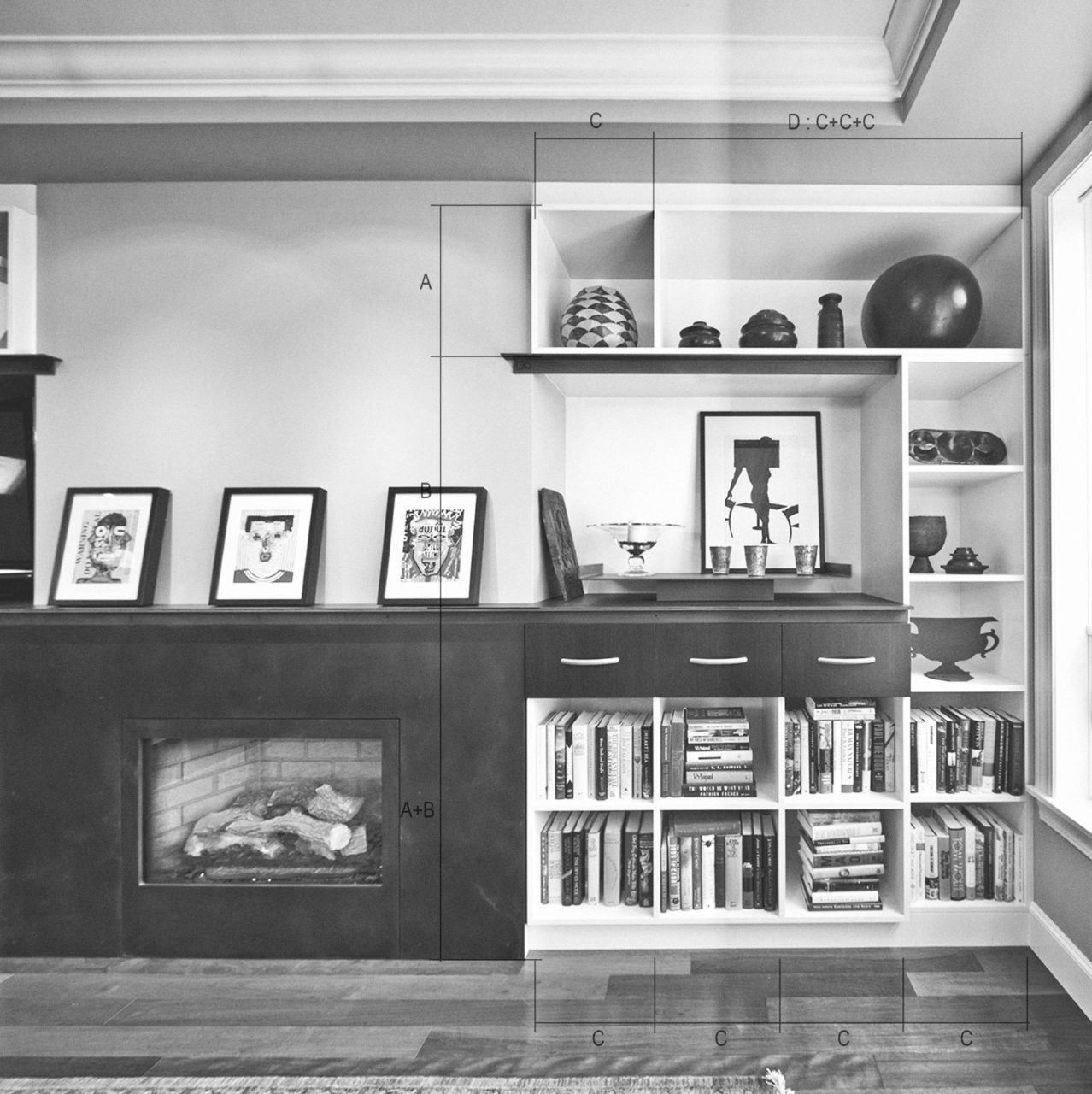Two of the most important compositional skills of an architect are a command of proportion and a sense of scale. While they are related, they have distinctly different meanings.

Proportion
Proportion is the dimensional relationship of one part to another or to the whole, described in terms of a ratio. In nature, each species has normal proportional relationships between the parts; thus a human head is about 1/8 of a person’s height and the distance across outstretched arms is equal to the height of the body. In the human-designed world of architecture, the “right” proportions are those that ancient scholars thought created visual harmony among the parts, based on mathematical ratios found throughout nature, such as 1:√2 and A:B = B:(A+B), as well as basic geometric shapes such as squares, circles, and triangles. Classical Greek and Roman architecture was obsessed with getting all the parts into prescribed proportions, in the belief that using these naturally occurring ratios would harmonize the design with universal, divine Truths.

Scale
Scale is the relative size of individual elements compared to each other and to a reference measurement. We develop a sense of scale as we experience the world, learning the relative size of people, trees, bugs, dogs, football fields, and everything else we regularly encounter. In buildings, we use the human body as the main reference, measuring the individual parts of a room – doors, windows, ceiling height, and details – against our own size and relative to each other. Descriptions such as “intimate scale,” “grand scale,” and of course “human scale” are all based on how we visually understand a building relative to ourselves.

Both proportion and scale are important aspects of good architectural design. It takes intentional effort, and skill, to massage the horizontal and vertical dimensions of building parts to fit into a unifying proportional system and create an overall visual harmony. Getting the scale right during the design phase is arguably more difficult, and takes keen experience, because it requires projecting oneself into the imagined building to know how big it is going to feel once it is built. But when managed with mastery, balanced proportions and consistent scale can create an enduringly beautiful building.



Great article.
Will appreciate if subsequent ones can be forwarded to my mail.
Regards.